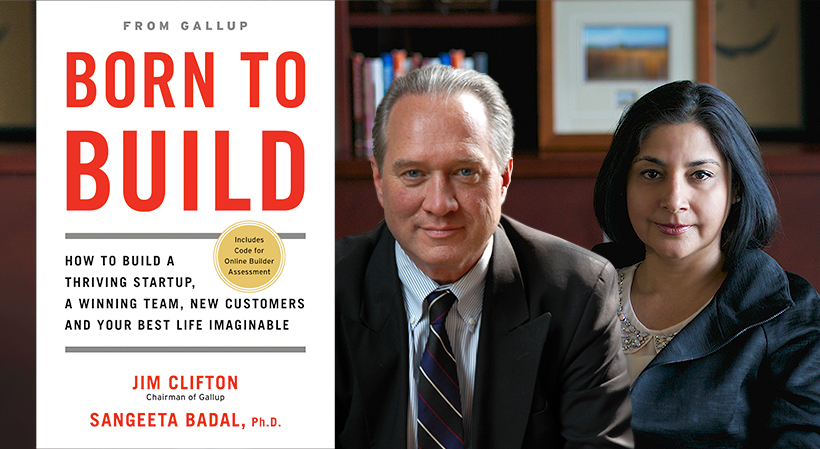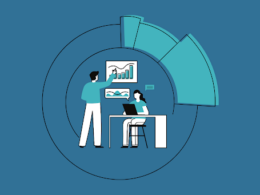The following is excerpted from “Born to Build: How to Build a Thriving Startup, A Winning Team, New Customers and Your Best Life Imaginable“ by Jim Clifton and Sangeeta Badal, Ph.D. Copyright 2018 Gallup, Inc. Reprinted with permission from Gallup Press. All rights reserved.
Action matters more than ideas. Your future depends on your actions.
Activating on your ideas is where talent and opportunity meet hard work to build successful products and ventures.
Great builders begin by developing a basic version of their product or service — a minimally viable product (MVP). Then, they put their MVP in front of early adopters (i.e., customers). They learn from customer feedback and repeat and refine until their product meets customer expectations, thus increasing the chances of their venture’s survival and success.
Generating hypotheses
A builder’s path to success is paved with challenges, setbacks and hardships. As a builder, you will encounter uncertainty, risk and doubt.
The best way to reduce risk is to start small. Successful builders do not engage in impulsive or uninformed risk-taking. They evaluate opportunities thoroughly and minimize risk by taking small, incremental steps. They begin with certain assumptions, which we’ll call hypotheses. Once you have formulated your hypotheses, test them empirically, collect feedback from your customers and refine your business concept.
Launching experiments
To confirm or disprove your hypotheses, you will have to launch a few experiments. You need to validate every part of your plan with customers. Remember, the only thing you need is a customer.
This bears repeating: Look for customers, not funding. Customers are the cash flow you need to sustain and grow your venture.
You might ask yourself these questions about two big unknowns when you are building something new: “How do I find my first customer?” and “How do I figure out what the customer needs?”
Related: 3 Ways to Sell More of Your Products and Services With the Traffic You Already Have
How do I find my first customer?
The answer to your first question — How do I find my first customer? — is threefold:
- Go back to asking yourself who you are, what your beliefs and values are, and who you see using your product or service.
- Another way to find your first customer is by using your work experience or any experience you have had with a similar product.
- Finally, ask yourself, “Who would be interested in trying my product or service?” A professor, a peer, a friend, anyone on your personal board of directors or someone in your network — can any of these people be your first customer?
Consider your initial customer to be your strategic partner. Cultivate a relationship of trust by staying in close touch with this person. Research indicates that repeated interactions with your initial customer lead to an improved product, critical market information, and new ideas for products or services.
How do I figure out what the customer needs?
The only way to figure out what your customer needs is to go out and sell to your potential customers.
Highly successful builders do not waste time and resources developing their product or service to perfection, nor do they spend money on market research or other marketing activities. They go out and start selling. They find potential customers before the product is ready. Their market research is the face-to-face interaction with their customers. They listen to their customers and learn from their behavior — how customers buy the product or service, which features they like and which they don’t, and what is important and what is irrelevant to them.
Empirical evidence you obtain from the customer becomes the basis for refining and improving your early-stage product or service, identifying additional markets, or pivoting to a new direction. Use customer behavior to confirm or disprove your hypotheses.
Measuring outcomes
A key component of your activation process is having measurable and concrete business outcomes to gauge the success (or failure) of your experiments. These metrics evaluate the overall health of your MVP and confirm that you have a reasonably good grasp of the following:
- I understand customers’ problems or the need in the market
- Customers find my product or service valuable (value hypothesis)
- A large number of customers are interested in my product or service (growth hypothesis)
- I can make a profit with what my customers are willing to pay for my product or service
The process of building something may take you in different directions than you originally imagined. You may start with a general goal — an idea of what you want to build (product or service) for whom (customer) and how (your business model to deliver your product to the customer). But the experiments you conduct and the results from your experiments will likely alter your plans, push you to adapt your strategy or point you in a new direction. With each experiment or iteration, you will get closer to building a product or service that a customer actually wants to buy (finding the product/market fit).
Confirming your value proposition to customers is a critical step for a sustainable venture. Once you have validated your hypotheses with early customers, decide if it is time to take your product to a wider market or if you need to keep fine-tuning.
Sign Up: Receive the StartupNation newsletter!
Dream big
If you are ready to roll out your product or service to a broader market, you have reached an important milestone. You have validated your value and growth hypotheses. You have figured out who your customers are, what you are offering them and how you will deliver your product or service.
With your business model validated, you are on your way to building a sustainable venture. As you continue to build, don’t forget to dream big. It is important to think about growth and scale.
“Born to Build: How to Build a Thriving Startup, A Winning Team, New Customers and Your Best Life Imaginable” is available now at fine booksellers and can be purchased via StartupNation.com.






